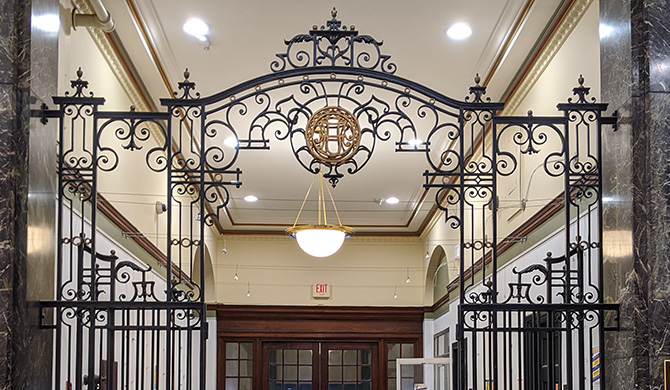
Our Mission
We deliver transformative technical and trade education that leads to economic advancement.
Our Vision
To achieve economic and social impact through dynamic and entrepreneurial curricula that develop diverse tech talent for our region and to help graduates thrive by building generational wealth.
Our Values
- Supporting our diverse community
- Fostering a supportive learning environment
Institutional Learning Outcomes
We value the learning outcomes of an educated person who is:
- Focusing on technical know-how
- Practicing professionalism
- Communicating effectively
- Deploying critical thinking skills
- Embracing information literacy
- Understanding sustainable development, and
- Acting responsibly through civic engagement
Our History
 Benjamin Franklin Cummings Institute of Technology owes its existence to the vision and wisdom of Benjamin Franklin, a world-renowned diplomat, scientist, inventor, civic activist, and statesman.
Benjamin Franklin Cummings Institute of Technology owes its existence to the vision and wisdom of Benjamin Franklin, a world-renowned diplomat, scientist, inventor, civic activist, and statesman.
Franklin was born in Boston on January 17, 1706, and learned the printing trade here. After working briefly with his father, a tallow chandler, he became an apprentice to his brother James, one of the few printers in Boston, where he learned the trade. Eventually a bitter quarrel with James led to a split that resulted in Ben’s move to Philadelphia in his late teens after James warned his competitors not to hire Ben. Unlike so many of the Founding Fathers who came from the colonial gentry, Franklin belonged to the “leather apron” class. Although one of the most significant men of his era, he remained ever proud of his trade and specified that his gravestone be engraved “Benjamin Franklin, Printer.”
Franklin believed that “good apprentices are likely to make good citizens,” and in his will in 1789, he stipulated a gift of £1000 to “the Inhabitants of the Town of Boston.” He noted that the kindness of two friends in helping him set up his business had been the basis of his fortune. “I wish to be useful even after my death…in forming and advancing other young people who may be serviceable to their country.” The interest was to augment the principal continually, and at the end of one 100 years, part of the fund was to be expended for “public works” and the balance was to be compounded for a second hundred years.
In December 1904, the steel magnate Andrew Carnegie, who heralded Benjamin Franklin as one of his heroes, matched the money in the Franklin Fund to build the college on two conditions: that the school be an industrial school similar to the Cooper Union, and that the City of Boston provide the land. When the first part of the fund matured just before the turn of the century, the Board of Managers of the Franklin Foundation agreed with Carnegie that a school providing training in the sciences would constitute the best and appropriate means of accomplishing Franklin’s beneficent purposes
On September 25, 1908, the Franklin Union was dedicated. Well over 200 years after his death, Franklin’s legacy continues to do great public good. Franklin’s vision has guided the college’s pragmatic approach of developing curricula that meets industry needs, and ensuring student success through comprehensive support.
Fun Historical Facts
- Soon after Henry Ford introduced the Model T, the affordable car that would put average Americans on the road, the course in Gas and Gasoline Engines became so popular that the college had to establish a waiting list and people lined up around the corner of Berkeley Street and onto Tremont in order to get on the list.
- On May 15, 1916, the first conference call was made at the college, linking San Francisco, Chicago, Atlanta, Philadelphia, New York, and Boston. More than nine hundred people filled the Franklin Union auditorium to hear guest speakers from around the country via telephone, including Alexander Graham Bell, the inventor of the telephone, and his assistant, Thomas A. Watson.
- On November 14, 1927 the very first fax was sent from the college. W.E Harkness of the American Telephone and Telegraph Company gave the first public demonstration of the newly developed telephoto process, which could transmit a five-by-seven inch photograph anywhere in the country over telephone wires in seven minutes, a boon especially for the newspaper industry.
Discover Your Future
Benjamin Franklin Cummings Institute of Technology is an affordable, urban college serving the Boston region and committed to student success and career readiness in technology fields. Through personalized support, hands-on learning, and industry-informed curricula, the college prepares graduates for work, life-long learning, and citizenship.
